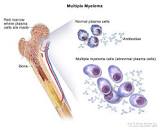Leave a Comment:
1 comment
Same difference? I was diagnosed with stage 1, and far as I know, I am stiil the same. I’m beginning to believe that this cancer will just aid another cancer or condition ….kill us! 😒
Reply
Multiple Myeloma an incurable disease, but I have spent the last 25 years in remission using a blend of conventional oncology and evidence-based nutrition, supplementation, and lifestyle therapies from peer-reviewed studies that your oncologist probably hasn't told you about.
Click the orange button to the right to learn more about what you can start doing today.

Newly diagnosed multiple myeloma – Stage 1 diagnosis puts the patient in a position to live well-beyond the five-year survival averages that we all read about for multiple myeloma. Let me explain how to do this.
My point in calling out the information in the four bullet points above is that the FDA approved “standard-of-care” for all newly diagnosed myeloma patients may not apply very well to the stage 1 myeloma patient. In effect, stage 1 patients are outliers in many ways.
Or to put this another way, the early stage, fifty something myeloma patient who chooses to undergo both conventional therapies as well as evidence-based but non-conventional, non-toxic therapies may have a very different myeloma experience than the average patient.
Chances are your oncologist will follow the “standard-of-care” treatment plan for the newly diagnosed myeloma patient. Remember that research shows that the patient with early stage myeloma responds better, on average, than does the newly diagnosed patient with stage 2 or 3 advanced disease.
Less treatment means less toxicity and fewer short, long-term and late stage side effects.
Good luck,
Life Expectancy-
“Stage I
Doctors often measure a person’s prognosis (outlook) using a combination of survival statistics and individual factors. The five-year relative survival rate for all stages of multiple myeloma combined is 54 percent. This means that people with all stages of multiple myeloma are a little more than half as likely to live for five years or more after being diagnosed, compared to people without myeloma.
The relative survival rate has steadily increased over the past few decades, as researchers have learned more about myeloma and developed better treatments. This means that people diagnosed with multiple myeloma today may have better outcomesthan current data may indicate.
Doctors use the R-ISS for determining prognosis in addition to staging. People with lower levels of albumin, or higher levels of beta-2 microglobulin or LDH, have a worse outlook. Survival statistics vary between people with different R-ISS stages:
Same difference? I was diagnosed with stage 1, and far as I know, I am stiil the same. I’m beginning to believe that this cancer will just aid another cancer or condition ….kill us! 😒
Reply